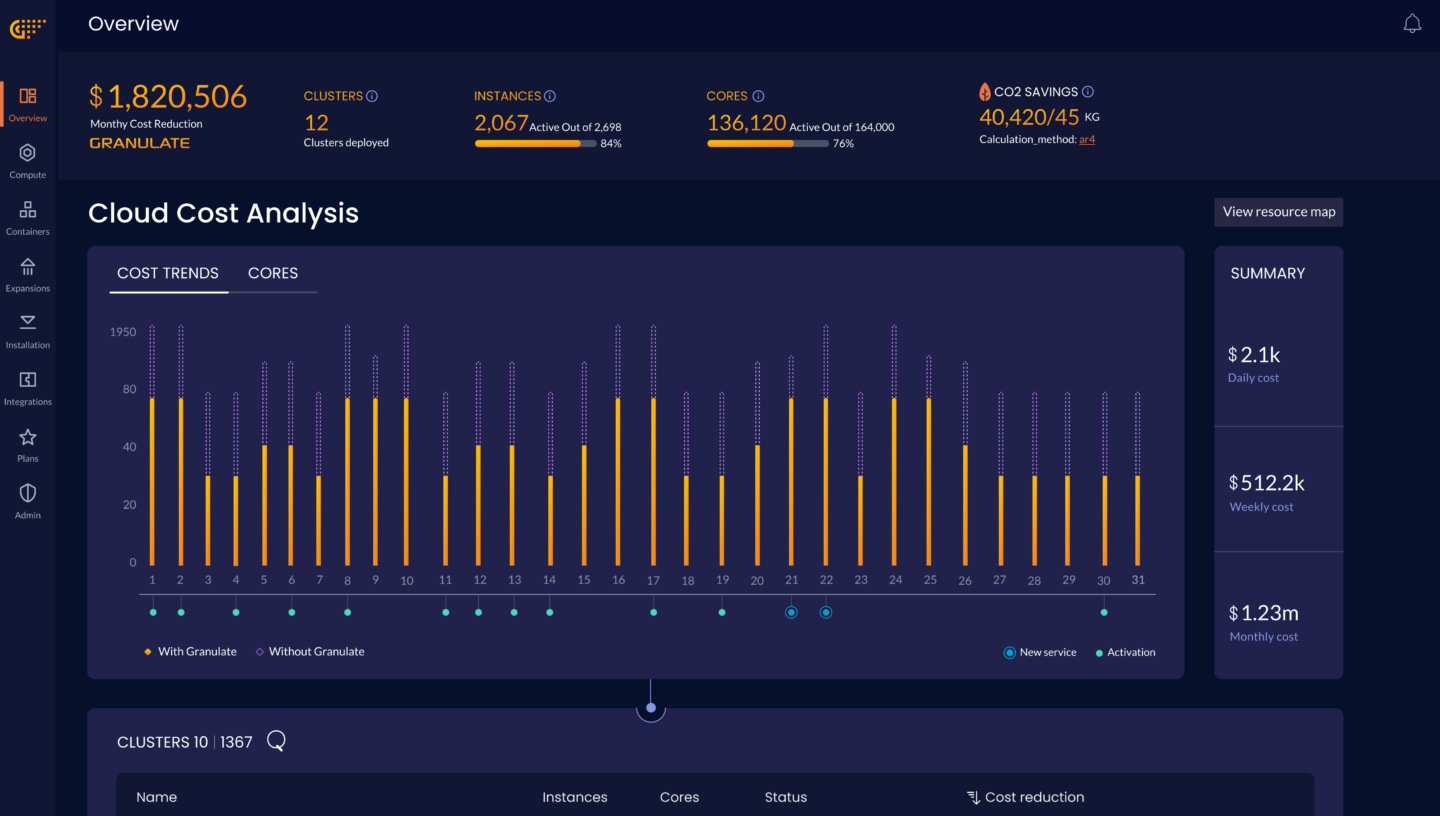As more and more resources migrate to the cloud, there’s an increased focus on cost control. Overprovisioning, unused resources, hidden fees, and the sheer complexity of managing cloud operations have led to burgeoning cloud budgets.
Nearly half of all businesses say they find it difficult to control cloud costs. It’s not uncommon for companies to find themselves spending 20% more on cloud infrastructure than they expected. For many enterprises, cloud spending is spiraling at an unsustainable level. Overall, cloud spending is forecast to expand to $597 billion in 2023, rising more than 21% from 2022 spending levels.
Reining in cloud spending without negatively impacting performance has become a top priority, especially in light of today’s economic uncertainty. Yet, engineering teams are often tasked with deploying cost optimization strategies reactively. In reality, organizations need a long-term optimization strategy that aligns with their business goals.

Proactive Cost Governance
Effective cloud cost management requires careful planning and monitoring to optimize spending while still delivering the high availability and responsive cloud environments today’s businesses demand. By deploying cost governance, resource and capacity optimization, and continuous monitoring, enterprises can move from cost avoidance to cost efficiency.
Doing so requires a focus on proactive cost governance and deploying automated tools to tag, detect, profile, monitor, and optimize spending.
Tagging and Cost Allocation
By applying tags to resources, you can achieve more granular visibility into cloud spending. For example, tags can associate costs with environments, owners, departments, or projects to better track and allocate expenses accurately. This can help keep teams on budget and uncover areas where spending needs closer examination.
Tagging also helps to identify resources you no longer need and decommission them automatically. When you stop using a particular application, tagging lets you view all of the resources associated with the application, so you can delete everything safely.
Cost Anomaly Detection
Many organizations only see cost overruns after the fact. By then, it’s too late to do anything about it except pay the bill and try to change things for the next month. Historical data is used to establish baselines. Cost anomaly detection flags unexpected or unusual spending patterns and provides an earlier warning so you can adjust more rapidly.
Continuous Profiling
Continuous profiling analyzes code performance across your environment so you can see where cost efficiency can be improved. Continuous profiling identifies bottlenecks, such as resource-intensive tasks or idle resources, that can be optimized for cost reduction.
Optimizing the most resource-consuming parts of code can streamline operations and reduce costs.

Capacity Optimization
Capacity optimization enables dynamic scaling to ensure resources are right-sized for actual use. This is especially effective for virtual environments and containerized platforms, such as Kubernetes.
Cloud services are scalable, enabling the use of more resources during peak demand or reducing resources during low-demand periods. Yet, the average organization provisions a third more cloud resources than they end up using. Dynamic auto-scaling optimizes your cloud spending. For example, using Granulate’s autonomous continuous workload optimization tools, ironSource reduced their instances count by 21% and achieved a 25% cost reduction.

Cost Control Automation
Cloud environments are constantly evolving. New projects and workloads are added. New resources are spun up. Older projects are completed or changed. Managing cloud costs is complex. Quite simply, it’s too complex to do without robust automation.
You need a continuous optimization tool that responds to a constantly shifting cloud environment to match compute resources to workload requirements in the most cost-efficient manner. For example, AWS can reduce costs by deploying different strategies such as:
- Choosing the correct region for workloads
- Balancing reserved instances and spot instances
- Shutting down or turning off unused instances
- Rightsizing low-utilization instances
- Enabling lifecycle management policies to transfer infrequently accessed storage to lower-cost storage tiers
Granulate provides autonomous, continuous workload optimization. Not only can you reduce cloud costs by up to 45% without having to implement any code or workflow changes, but that’s accomplished because of improved application performance. With out-of-the-box support for cloud infrastructure on AWS, Azure, or GCP, Granulate learns your data flows and patterns to automatically optimize runtime-level resource management for cloud, multi-cloud, and hybrid environments.
The Granulate Dashboard

The Granulate Dashboard provides real-time visibility and control by visually tracking, analyzing, and displaying key cost and performance measures. The dashboard provides quick access to summary data over all optimized cluster and individual data for each service to validate your investment.
- Cost savings. A centralized dashboard lets you see how much compute spending you’re saving using Granulate, comparing actual spend across optimized services against what you would have spent otherwise. You can also view performance improvements and CO2 reductions based on Granulate’s optimization.
- Optimization deployment. The dashboard also monitors the deployment status of Granulate agents across services, showing the distribution of active agents that are in the process of optimizing performance and those still in learning mode.
- Resource mapping. A graphical view of your compute environments shows you the health of each resource, creating an overview of your cloud infrastructure with drill-down capabilities into services.
You also get insight into performance, including:
- Number of cores
- Number of instances
- Average number of requests per second
- Average latency
- Average CPU utilization
